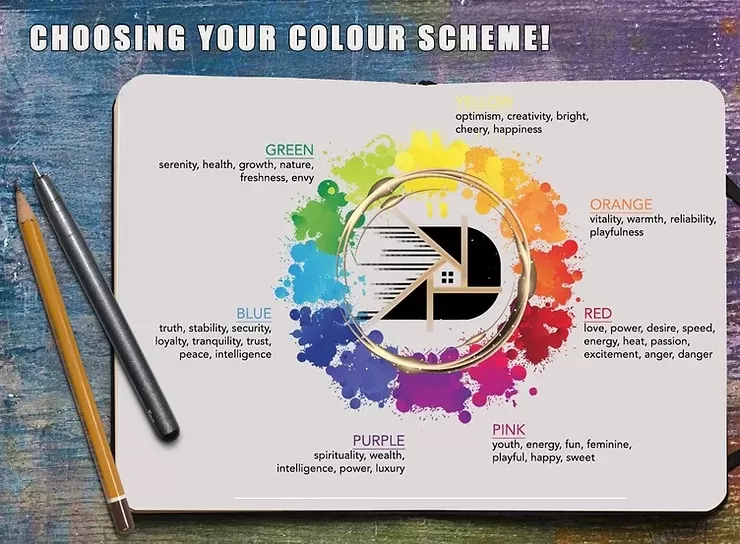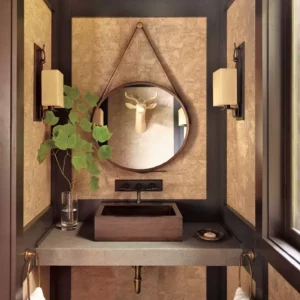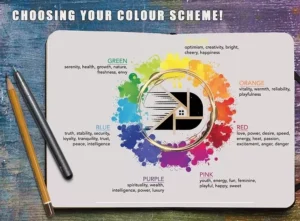Choosing Your Colour Scheme Picking a different hue can make the room look bigger or smaller and affect your mood and perceived temperature. You can use colour and form to give your interior a distinct spatial impression.
Colour and feelings
Warm colours such as red, orange, and yellow create a warm and friendly aura, and catch your interest making you more engaged. They are more personal than cold colours, allowing you to center your attention on them, and a wall with a tactile structure is much more welcoming.
In contrast, cold colours have a soothing and refreshing effect. Green symbolises nature, unity, and peace, while blue represents tranquility and serenity. It is common knowledge that cool colours make space appear larger and lighter.
Optimistic feelings are conveyed by warm colours, e.g. pleasure is associated with yellow, passion and intimacy with red. However, depending on the piece’s context, they can also be associated with darker themes.
Bright and vivid warm colours contrast with darker, colder colours as they lie opposite on the colour wheel. This contrast can make a piece stand out and attract the audience’s attention.
Warmer colours often bring components to the foreground of the picture, while cooler colours, such as blue and green, anchor them to the background, although this is not always the case.

The effect is a tone-on-tone look.
Using different quantities of white with the same colour tone will make the interior look more sophisticated and calming.
You can add different textures and structures to monochrome palettes to create an immediate depth effect without producing an overpowering visual effect. You can draw complex designs in many directions if you choose to do so.
Colour and light
Colour is a source of light. Colour is energy.
How we interpret colour in a space is significantly affected by light.
To make a room brighter, adjust the way the light is reflected, which can be achieved using 3D frames or panels to create an interplay between light and shadow.
Lighter colours make a room appear more prominent than darker colours, as opposed to dark walls which absorb light.
Colour can be tricky,
Colour is more than just pairs on the colour wheel. It can create moods and determine the identity of your space. You should think about how you use each colour and play with various patterns – as a backdrop, accent, or text.
Think about how tints and shades can bring effect and drama to suitable locations. Also, consider how each colour fits with its surroundings. In certain variations, each hue will take on its neighbors’ properties, almost producing a new hue.
You should wisely choose and implement the colour scheme for any space as it is the primary tool for understanding the space and its users in its entirety.








